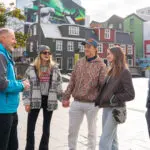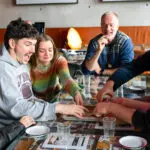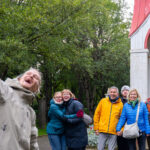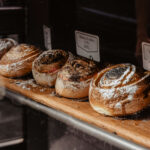West Iceland abounds in many natural and cultural attractions. However, tourists often overlook it on their trip to the island. Snæfellsnes Peninsula with a unique Snæfellsjökull National Park, picturesque black beaches, impressive glaciers, stunning waterfalls, wild animals, and many examples of cultural heritage – it is Iceland in a nutshell!
Check out the best attractions to visit in West Iceland:
Snæfellsjökull National Park
Located on the Snæfellsnes Peninsula, established on June 28, 2001. The park’s landscape is dominated by a glacier and volcano and numerous volcanic forms like lava fields covered with moss, craters, and smaller volcanoes. It is Iceland’s only coastal park and home to Icelandic fauna, especially to many species of seabirds, seals, fish, and whales.
The main point in this national park is the active Snæfellsjökull stratovolcano (1446 m), covered by a glacier that can be seen from Reykjavík about 200 kilometers away. Snæfellsjökull was the inspiration for Jules Verne during the creation of the novel Journey to the Center of the Earth (1864). Snæfellsjökull National Park is a place with fascinating geology, unusual flora and fauna, many stories about fishermen and Icelandic culture, and truly incredible views from the end of the world.
Djúpalónssandur, Snæfellsjökull National Park
Djúpalónssandur is a dramatic, arched, black sand beach with many rock formations (like an elf church and a troll) at the very tip of the Snæfellsnes Peninsula. In the past, there was a fishing village there; boats were moored on the beach. Down the coast, there are famous four lifting stones; once fishermen wanted to work at sea, they had to deal with lifting stones as a part of recruitment.
The largest stone is called Fullsterkur (154 kg, Fully Strong), then Hálfsterkur (100 kilograms, Half Strong), Hálfdrættingur (54 kg, Weak), and Amlóði (23 kg, Bungler). Nowadays, tourists also try to pick them up, just for fun. Compared to the other famous black sand beach – Reynisfjara, in the south of Iceland, Djúpalónssandur is usually less crowded, and the waves can also reach enormous sizes here. It may be even more impressive.
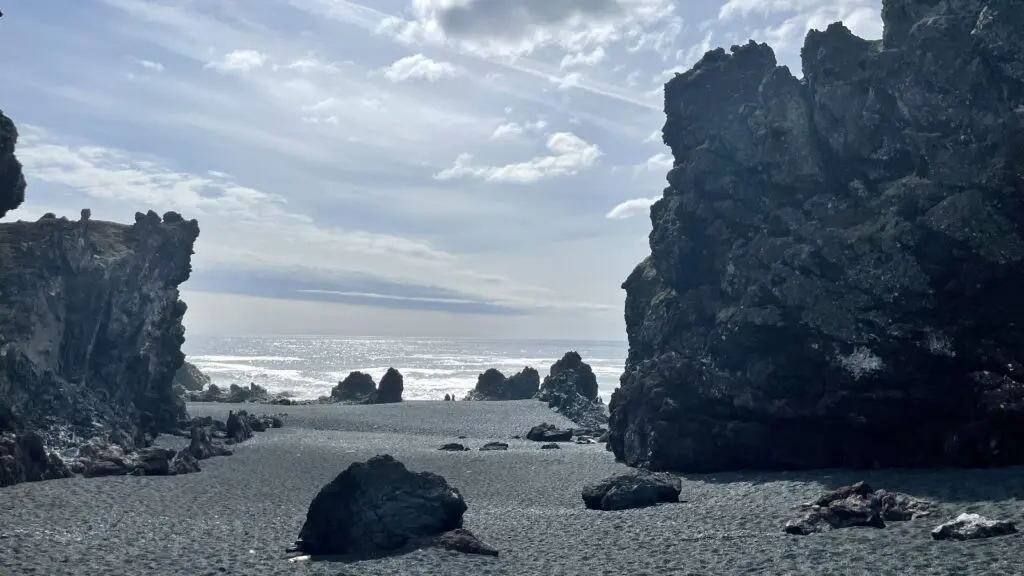
Djúpalónssandur, Zofia Pękala
Ytri Tunga, Snæfellsnes Peninsula
Ytri Tunga is a yellow (is not that obvious in Iceland) sand beach known as a perfect spot for watching seals. The seals tend to bask on the rocks, so they are easy to observe from a sufficient distance from the beach not to disturb wildlife.
The harbor seal is the most common seal species in Iceland, but at Ytri Tunga, you can also spot significantly bigger grey seals. The area around the beach is idyllic, and if you are lucky with the weather, it may be a superb place for a picnic in the middle of nowhere.
Arnarstapi, Snæfellsnes Peninsula
A small, adorable fishing village at the foot of the glacier Snæfellsjökull. You can take a nice walk along the coast and admire the cliffs and various rock formations such as the Stone Bridge. Arnarstapi is also a paradise for bird-watching lovers, and the patient and lucky ones might even spot orcas!
Búðakirkja, Snæfellsnes Peninsula
A small, wooden, picturesque church was built in 1848 in Búðir. Due to its excellent location among the mountains, glaciers, and the ocean, it is often chosen as a place for wedding sessions.
Búðir was also the place where Iceland’s only serial killer, Axlar-Björn, lived in the 16th century. Read about him and other insidious persons from Icelandic history.
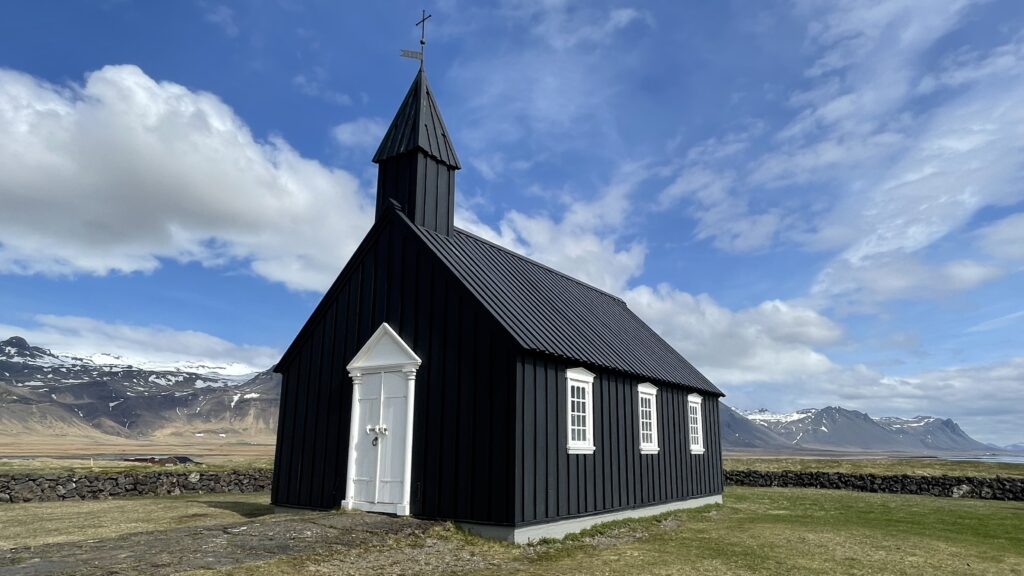
Búðakirkja, Zofia Pękala
Selvallafoss, Snæfellsnes Peninsula
A hidden waterfall, better known as a Sheep’s waterfall, obviously some sheep graze around all the time. Selvallafoss is peculiar because you can stand behind its wall of water. The waterfall cannot be seen from the road, and it’s challenging to find any mention of it in guidebooks, but this is a place that shouldn’t be missed when visiting West Iceland.
Kirkjufell, Snæfellsnes Peninsula
Kirkjufell (Church Mountain, 463 m) is probably the most photographed mountain in Iceland. The point is to capture the steep, conical peak and the waterfalls Kirkjufellsfoss. Kirkjufell is climbable, but it is hazardous, and we would not recommend that without a local guide.
The mountain became internationally famous when it was used as a setting in Game of Thrones.
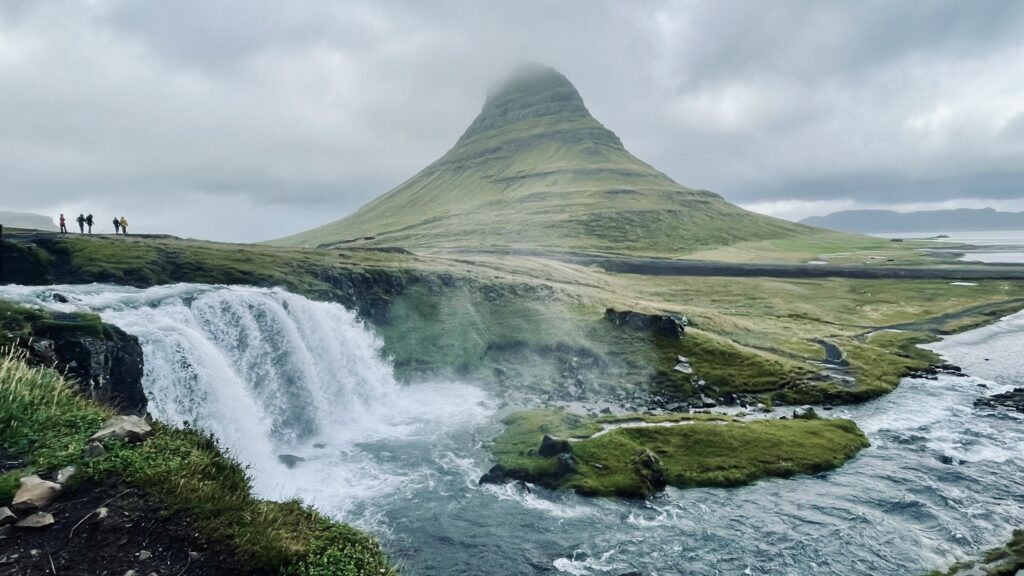
Kirkjufell, Zofia Pękala
Deildartunguhver
The most powerful hot spring in Europe. Deildartunguhver’s flow rate is 180 liters per second with a temperature of 100 Celsius degrees! All around is full of steam and the characteristic smell of hot Icelandic water. In Deildartunguhver, there is also a famous, small stand with organic tomatoes from the nearby farm and the Krauma – a luxury, natural, geothermal bath and SPA.
Reykholt
This tiny village was the home of Snorri Sturluson, a legendary Nordic writer, and historian living in the 13th century. In honor of Snorri’s works, a historic tourist center was built, and it is worth stopping there for a while and delving into the history of him and this region. In Reykholt, there is a hot spring known as Snorralaug, probably the oldest geothermal pool in the country, and a lovely Reykholtskirkja church.
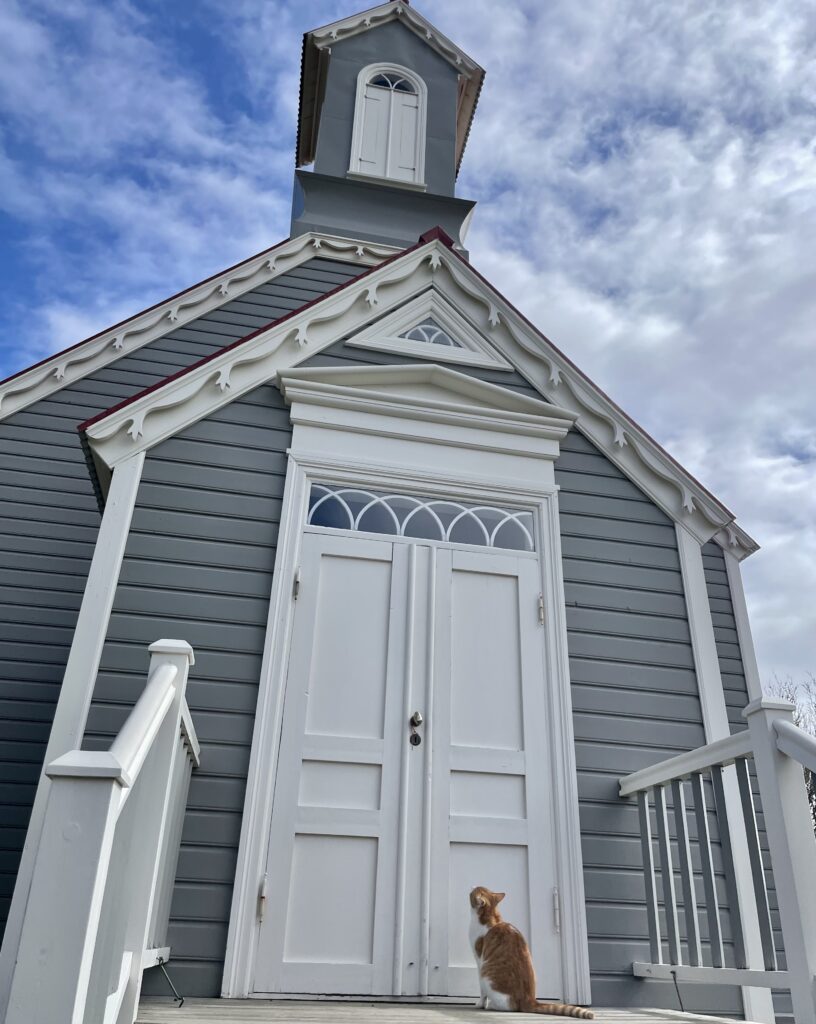
Reykholtskirkja, Zofia Pękala
Into the Glacier
The most prominent man-made ice tunnel in the world is on Langjökull glacier, Iceland’s second biggest glacier. Into the Glacier is a tour operator that allows you to marvel at the impressive blue ice inside the glacier’s heart. The tunnel is 500 meters long, and even a chapel was built there! It’s possible to book the tour directly from Reykjavík or meet a guide at the location in Húsafell. Visiting Into the Glacier is a once-in-a-lifetime experience that you should try!
Húsafell Canyon Baths
From Húsafell, you can also book a guided tour to the canyon baths. During a short and rated as an easy hike through the extraordinary surroundings, there will be a moment to admire a lovely, two-tiered Langifoss waterfall. There are 64 steps down the canyon to enjoy two natural geothermal pools (with temperatures between 30 and 41 Celsius) and a cold water spring.
The Húsafell Canyon Baths project assumes that the area will remain as accurate to the area’s heritage as possible: the structures are made of boulders from the canyon, and horseshoes from a nearby farm were mounted as hangers in a wooden, cute changing room – everything forms a coherent whole here. Húsafell Canyon Baths are one of Iceland’s most charming hot springs.
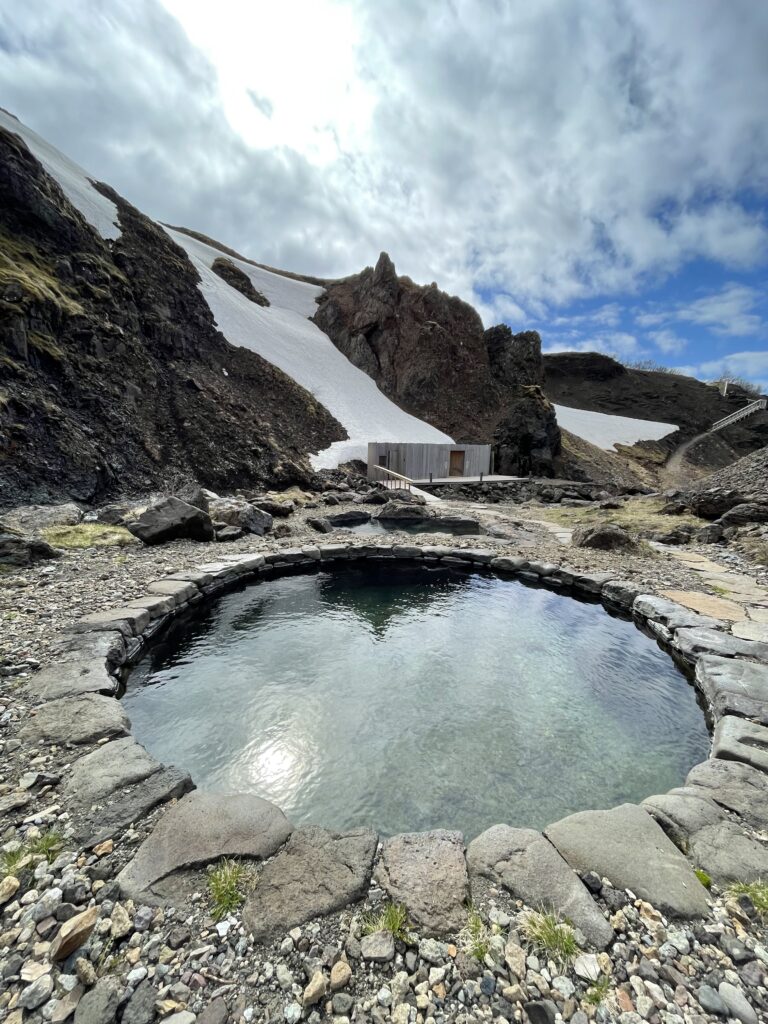
Húsafell Canyon Baths, Zofia Pękala
Glanni
Glanni means light or shining, which perfectly describes the color of the water in the canyon of this stunning waterfall. Supposedly, local people believe that elves and trolls dwell hereabouts.
Grábrók
The highest (170 m) of the three craters, called Grábrókargigar National Monument, formed 3200 years ago in a fissure eruption. There are marked trails around Grábrók, so it’s possible to hike (considered an easy route, +600 steps) to its top to admire the crater with a lovely round shape, the lava fields, and the spectacular views of the surroundings. The crater is easily accessible due to its location next to the main road.
Hraunfossar and Barnafoss
Hraunfossar (meaning lava fields) is a series of waterfalls that appear where groundwater streams from beneath the Hallmundarhraun lava out into the Hvítá River, creating cascades several hundred meters wide. Barnafoss is a waterfall formed right on the river.
The water in Hraunfossar is crystal clear, azure and the river (Hvítá means white) contains glacial melt water, so the contrast and colors of the water are captivating. There are many paths, balconies, and viewing footbridges around the waterfalls, and you can lose track of time there while staring at these beautiful waters. Hraunfossar and Barnafoss are one of the most magnificent and charming waterfalls all over Iceland.
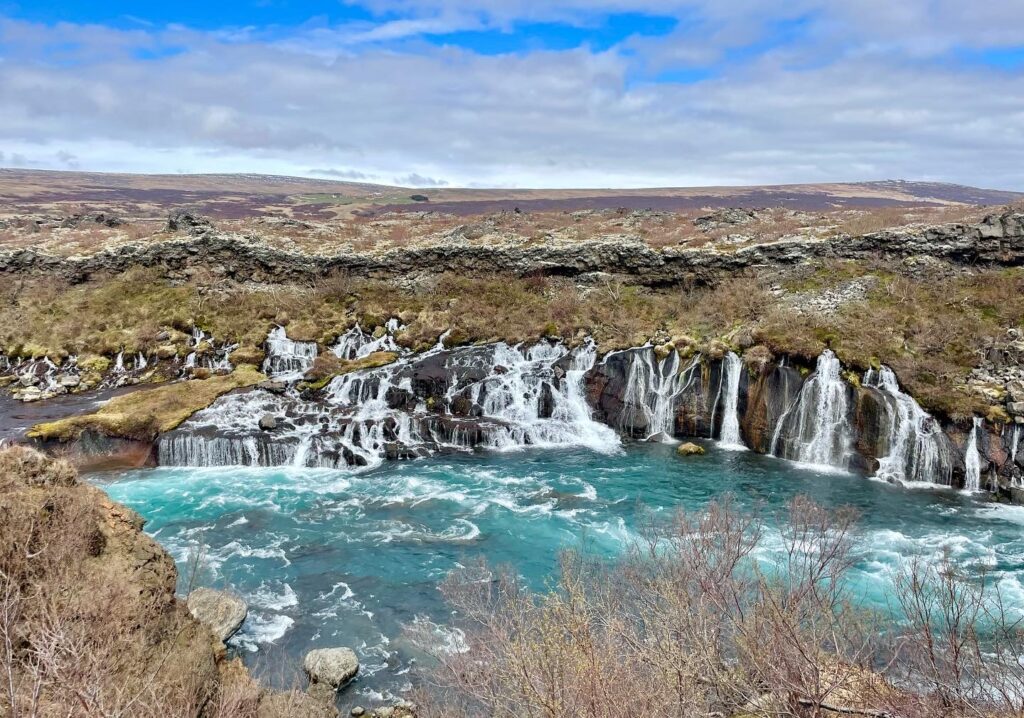
Hraunfossar, Zofia Pękala
The island in a nutshell. Delightful and a bit wild, magical West Iceland.
Have you been to these places? What is your impression?
Could you recommend anything else to visit in the West region of Iceland?
Please let us know in the comments!
Please signup HERE for our newsletter for more fun facts and information about Iceland!


